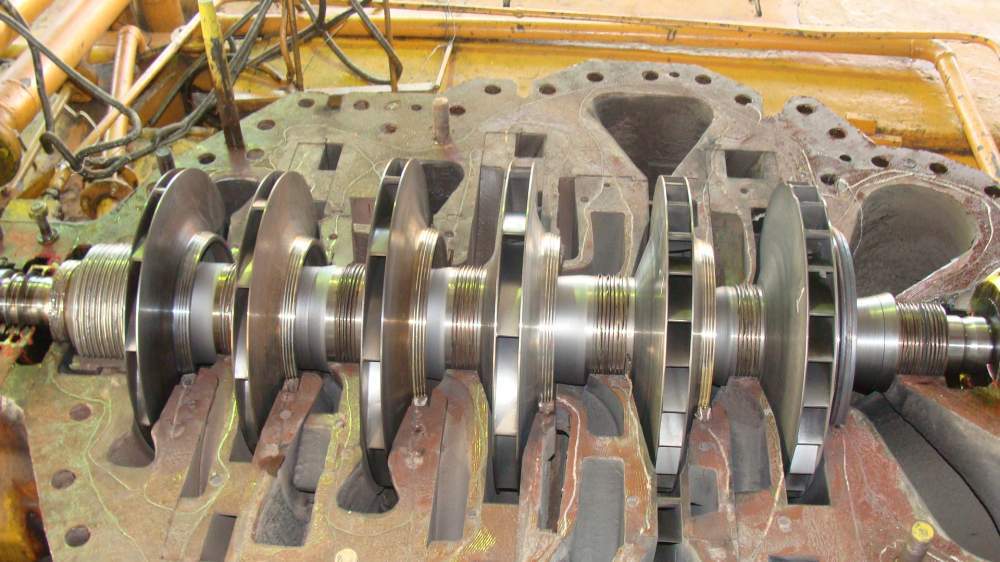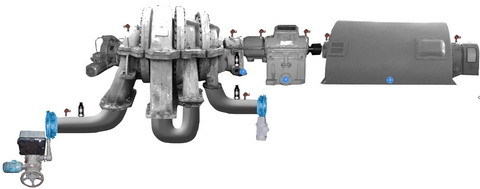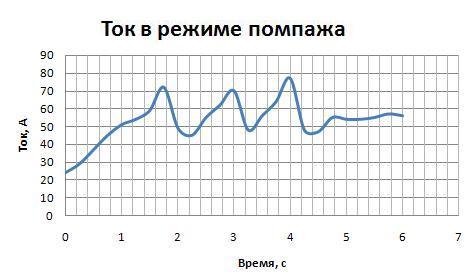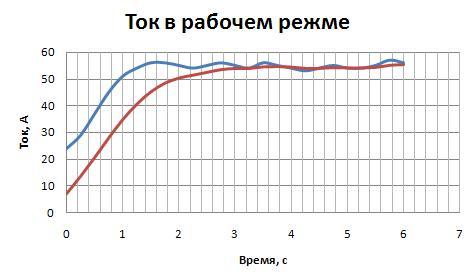Centrifugal compressor installations. Surge protection
Compressor installations in the industry are used in many technological operations. Compressed air is obtained by different types of compressor units. From the rotary type to the vortex turbomachines. K-250 centrifugal compressor units are widely used in industry. But all types of compressors have a critical mode of operation - surging.

Dynamic gas compression in centrifugal compressors is achieved by increasing the polytropic pressure of the gas flow. This process is described by the gas-dynamic characteristics of the compressor, which are presented on a two-dimensional graph of the curve showing the operating points of the compressor.

At the modes of operation of the compressor close to the design point (point A), the gas flow is consistent with the shape of the elements of the flow part. With a significant deviation of the regimes, various secondary flows arise in the flow, complex physical processes arise.
The intersection of the surging line (point B) is accompanied by high-frequency oscillations, and there is an abrupt change in the flow rate from the maximum to the negative (flow reversal).
POSPAGE is a non-stationary, self-oscillating mode of operation of a compressor with a frequency of pressure and flow fluctuations of the order of 0.5 - 2.0 Hz, depending on the accumulating characteristics of the network.
Surging is accompanied by a rapid increase in gas temperature, the appearance of strong shocks and vibration, which can lead to the destruction of the compressor. Surging is an unacceptable phenomenon for compressors.
')
Modern compressor control systems in their arsenal have many different algorithms to protect the compressor from surge phenomena. Mathematical models describing the processes occurring during air compression, embedded in the control systems of compressor units, allow controlling actuators by the surge curve of the compressor unit (compressor unit) to reduce operating costs, without prejudice to the mechanical part of the compressor unit. During operation, the mechanical characteristics of KU are not changing for the better. Mat. The model may be adaptive to new characteristics of the CU, but it is difficult to implement. Therefore, at the stage of commissioning, adjust the mat. model for a specific CU. But the very detection of the onset of surge phenomena or steady-state surging takes place regardless of the applied control system KU. Therefore, this type of emergency stop KU is present in any ACS (automatic control system) KU. For the detection of surge phenomena, a lot of input data is used: change in outlet pressure, temperature, etc.
In this article I will explain how to detect a surge phenomenon in the QA using asimple software algorithm , a simple software implementation of a simple algorithm and the only signal that will be used to evaluate this phenomenon.
Consider the KU K-250.

Centrifugal, multi-stage compressor with intermediate outlets to gas coolers.
In the operating mode, when KU reached the nominal characteristics, the stator current has almost the nominal value, if the motor is selected without power reserve. During surge phenomena, the pressure at the outlet rises to the maximum possible for this type of CU, after which the compressed air flows under the influence of pressure from higher-order steps to lower ones. At the moment of overflow, the load on the motor shaft decreases sharply, a mechanical shock occurs. This moment must be detected at an early stage in order to prevent mechanical damage to the QA. Why these surging phenomena arise will remain beyond the scope of this article.
Consider a graph of stator current in operating mode.

During the beginning of the surge, when the compressed air flows from a higher stage to a lower one, the motor is “pushed”, at this moment there is a surge in the effective current value, and then due to a decrease in load, the current fails, then the operating current rises repeats again, until the surge disappears. Schedule of this mode.

On this graph, fluctuations occur with frequent in 1 Hertz. This behavior of the stator current, a direct consequence of the beginning of the surge KU. How to programmatically detect?
In operation, the current changes smoothly and within narrow limits. At the time of the beginning or already occurring surge, the oscillations have a large amplitude and frequency. So with a normal digital low-pass filter, you can detect this emergency.
For example, once every 100 ms, we will call a filter function, the formula for which is as follows:

Where 0 <A <1 filter coefficient. The smaller A, the weaker the filter.
Let's look at the schedule of such a filter.

Now, if we start a surge, then let's see how the filter behaves.

and the graph shows that the current crosses the filter several times in the surge mode, but such a detector will have false positives in the operating mode. Therefore, it is necessary to shift the filtered signal up and down by a value that corresponds to the surge amplitude. For example, 5 A to the other side.

The operating mode is in the range, which indicates normal operation, and the surge already crosses our boundaries, and you can safely detect the surge at 7-8 intersections and abort the AC. You can go even further and at the first intersection try to stop the surge state by controlling the actuators of the throttle valve and the surge valve.
Using the example of a Siemens S7-300 PLC, I will describe this function.
In thisfile is an archive , project STEP7, for CPU 314-2PN / DP. It shows the main idea of surge detection. The code is not optimized and not brought to mind.
A video demonstrating the operation of the surge protection, see below.
Along with software implementations for deep throttling KU along the surge boundary, it is necessary to have an emergency working out of an already beginning or beginning surge in KU.

Introduction
Dynamic gas compression in centrifugal compressors is achieved by increasing the polytropic pressure of the gas flow. This process is described by the gas-dynamic characteristics of the compressor, which are presented on a two-dimensional graph of the curve showing the operating points of the compressor.

At the modes of operation of the compressor close to the design point (point A), the gas flow is consistent with the shape of the elements of the flow part. With a significant deviation of the regimes, various secondary flows arise in the flow, complex physical processes arise.
The intersection of the surging line (point B) is accompanied by high-frequency oscillations, and there is an abrupt change in the flow rate from the maximum to the negative (flow reversal).
POSPAGE is a non-stationary, self-oscillating mode of operation of a compressor with a frequency of pressure and flow fluctuations of the order of 0.5 - 2.0 Hz, depending on the accumulating characteristics of the network.
Surging is accompanied by a rapid increase in gas temperature, the appearance of strong shocks and vibration, which can lead to the destruction of the compressor. Surging is an unacceptable phenomenon for compressors.
')
How to protect against surge?
Modern compressor control systems in their arsenal have many different algorithms to protect the compressor from surge phenomena. Mathematical models describing the processes occurring during air compression, embedded in the control systems of compressor units, allow controlling actuators by the surge curve of the compressor unit (compressor unit) to reduce operating costs, without prejudice to the mechanical part of the compressor unit. During operation, the mechanical characteristics of KU are not changing for the better. Mat. The model may be adaptive to new characteristics of the CU, but it is difficult to implement. Therefore, at the stage of commissioning, adjust the mat. model for a specific CU. But the very detection of the onset of surge phenomena or steady-state surging takes place regardless of the applied control system KU. Therefore, this type of emergency stop KU is present in any ACS (automatic control system) KU. For the detection of surge phenomena, a lot of input data is used: change in outlet pressure, temperature, etc.
KU surge detector
In this article I will explain how to detect a surge phenomenon in the QA using a
Consider the KU K-250.

Centrifugal, multi-stage compressor with intermediate outlets to gas coolers.
In the operating mode, when KU reached the nominal characteristics, the stator current has almost the nominal value, if the motor is selected without power reserve. During surge phenomena, the pressure at the outlet rises to the maximum possible for this type of CU, after which the compressed air flows under the influence of pressure from higher-order steps to lower ones. At the moment of overflow, the load on the motor shaft decreases sharply, a mechanical shock occurs. This moment must be detected at an early stage in order to prevent mechanical damage to the QA. Why these surging phenomena arise will remain beyond the scope of this article.
Consider a graph of stator current in operating mode.
During the beginning of the surge, when the compressed air flows from a higher stage to a lower one, the motor is “pushed”, at this moment there is a surge in the effective current value, and then due to a decrease in load, the current fails, then the operating current rises repeats again, until the surge disappears. Schedule of this mode.
On this graph, fluctuations occur with frequent in 1 Hertz. This behavior of the stator current, a direct consequence of the beginning of the surge KU. How to programmatically detect?
Software implementation of anti-surge protection
In operation, the current changes smoothly and within narrow limits. At the time of the beginning or already occurring surge, the oscillations have a large amplitude and frequency. So with a normal digital low-pass filter, you can detect this emergency.
For example, once every 100 ms, we will call a filter function, the formula for which is as follows:

Where 0 <A <1 filter coefficient. The smaller A, the weaker the filter.
Let's look at the schedule of such a filter.
Now, if we start a surge, then let's see how the filter behaves.
and the graph shows that the current crosses the filter several times in the surge mode, but such a detector will have false positives in the operating mode. Therefore, it is necessary to shift the filtered signal up and down by a value that corresponds to the surge amplitude. For example, 5 A to the other side.
The operating mode is in the range, which indicates normal operation, and the surge already crosses our boundaries, and you can safely detect the surge at 7-8 intersections and abort the AC. You can go even further and at the first intersection try to stop the surge state by controlling the actuators of the throttle valve and the surge valve.
Using the example of a Siemens S7-300 PLC, I will describe this function.
In this
A video demonstrating the operation of the surge protection, see below.
Along with software implementations for deep throttling KU along the surge boundary, it is necessary to have an emergency working out of an already beginning or beginning surge in KU.
Source: https://habr.com/ru/post/274497/
All Articles